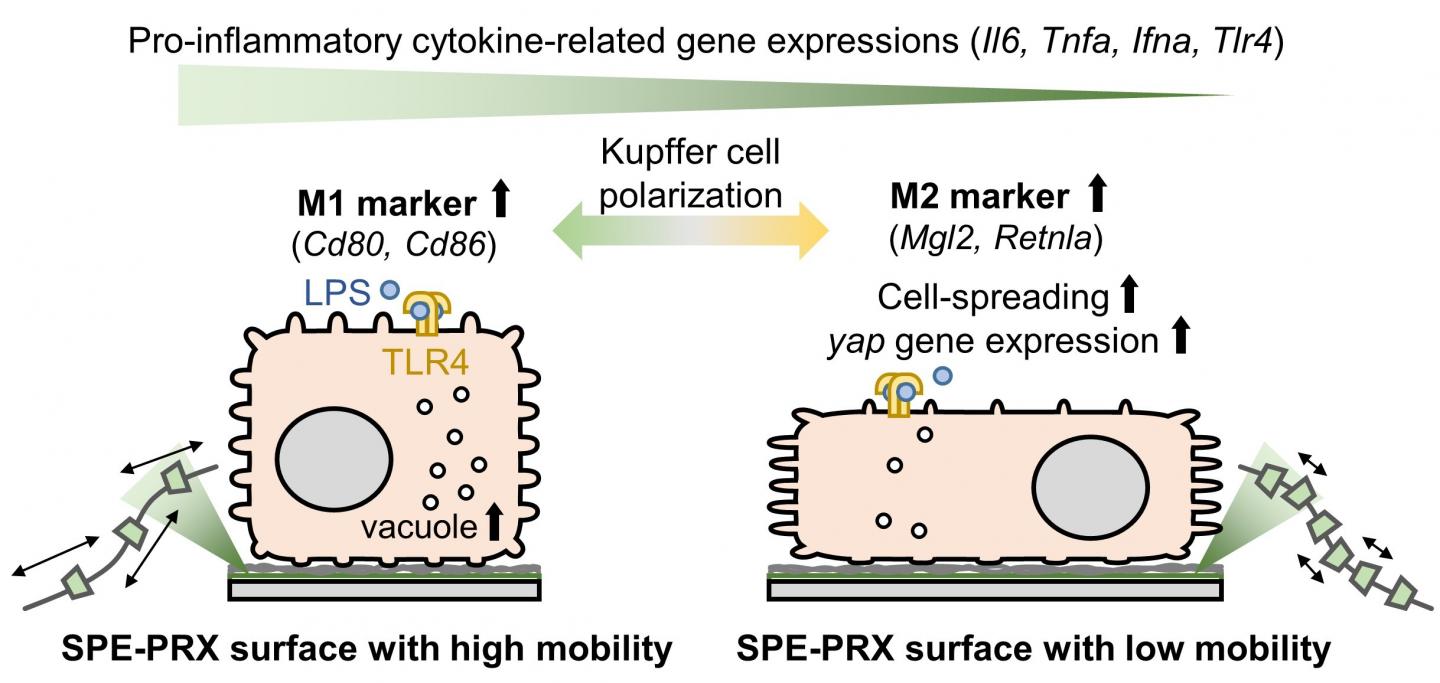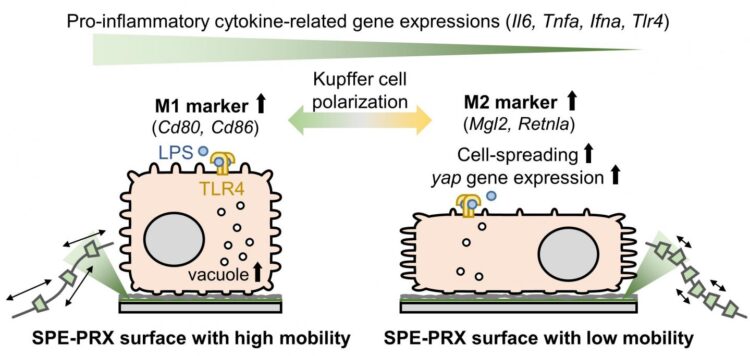
Credit: Department of Organic Biomaterials,TMDU
Researchers from Tokyo Medical and Dental University (TMDU) identify biomaterials that can be used to modulate liver immune cell behavior
Tokyo, Japan – Biomaterials are substances, natural or manmade, that are used in medicine to interact with the human body for various purposes, such as wound healing and tissue regeneration. Previous work on biomaterials has shown that they can affect cells in many ways, including how they grow, move, and the type of cell they develop into. Scientists have recently begun investigating biomaterials with properties that can be fine-tuned to optimize their use in regenerative medicine. Now, researchers at Tokyo Medical and Dental University (TMDU) have identified a polymer with tunable mobility properties that can alter the immune activity of specific liver cells.
In an article published in Biomaterials Science, the TMDU researchers report how they varied the mobility of specific biomaterials and observed significant effects on mouse Kupffer cells. These are liver cells that form part of the innate immune system–the body’s first line of defense against an infection in this organ.
The group previously worked with polymer-based biomaterials called polyrotaxane. Other molecules can be weaved within the polymer structure, and their ability to move freely throughout this structure is what the researchers refer to as “molecular mobility.” Polyrotaxane mobility can be adjusted by adding more molecules within the polymer, and this could affect the fate and maintenance of cells interacting with the biomaterials. Because of this, the TMDU group became interested in whether the biomaterials could be utilized to manipulate the immune system.
“We hypothesized that the polyrotaxane molecular mobility could serve as a sort of mechanical cue to the cells in the surrounding environment,” says lead author of the study Yoshinori Arisaka. “Using this property to possibly modulate immune cell activity could revolutionize immunomodulation.”
The researchers cultured Kupffer cells on a surface coated with polyrotaxane. They treated the cells with lipopolysaccharide, which is a molecule used as an immune activator. They adjusted the molecular mobility of the surface and then examined cell movement and shape, as well as the expression levels of certain inflammation-related genes. Interestingly, they found that the surface mobility significantly affected the movement and gene expression profile of the Kupffer cells.
“The surfaces with higher mobility increased expression of pro-inflammatory genes in the cells,” explains Nobuhiko Yui, senior author. “This means that the cells were behaving as if they were part of an active immune response.”
The authors believe that this system may be the groundwork for using biomaterials in humans to balance immune activity.
“Our data demonstrate that mechanical cues may play a role in regulating cell behavior,” says Arisaka.
This work is a critical step forward in biomaterials research. Mechanically regulating immune system activity with novel biomaterials may transform regenerative medicine.
###
The article, “Molecular mobility of polyrotaxane-based biointerfaces alters inflammatory responses and polarization in Kupffer cell lines,” was published in Biomaterials Science at DOI: 10.1039/D0BM02127J
Media Contact
Nobuhiko YUI
[email protected]
Original Source
http://www.
Related Journal Article
http://dx.





